As your child grows from a baby to a toddler, you might feel like it’s time to switch them to a big bed. But hold on – making this decision is important, and timing is key. If you rush it, things can get tricky.
There are different reasons why parents consider moving their toddler to a bed: maybe they think it’s just the next step since their child is no longer a baby, or maybe it’s because there’s another baby on the way and they don’t want to buy a second crib.
Before you make the switch, it’s essential to watch out for signs that your toddler might not be ready for a bed just yet. Even though you might be excited to make the transition, it’s crucial to make sure your child is ready.
As your little one grows, transitioning from a crib to a bed is a big step towards independence. But it’s natural to feel unsure about when the right time is. In this blog post, we’ll look at signs that your toddler might not be ready for a bed yet, along with some practical tips and advice to help you and your child through this transition smoothly.
Is My Child Ready For A Toddler Bed?
Your child may be ready for a toddler bed if they are between 18 and 24 months old, around 90cm tall, and showing signs of increased activity and restlessness in their cot. Additionally, consider their ability to climb safely, any safety concerns with their current sleeping environment, their comfort during sleep, their desire for independence, and your own readiness for the transition. Gradually introducing the toddler bed can help ease the transition process.
Signs Your Toddler Is Not Ready For A Bed
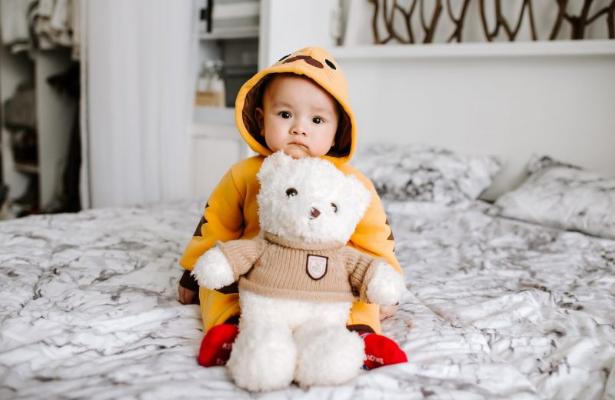
Transitioning your toddler from a crib to a big kid bed is a significant milestone, but it’s crucial to recognize when they might not be ready for this change. If you rush into it without thinking, it could cause stress for both you and your little one.
So, while it’s exciting to make this change, keep an eye out for signs that your toddler might not be quite ready yet. Pay attention to these signs so you can decide the best time to switch.
Lack of Physical Coordination
Your toddler may lack the strength and balance needed to climb in and out of bed independently. This could pose a safety risk.
Your child might still be developing the upper-body coordination required for using a toddler bed.
Disinterest in Transitioning
Some toddlers may show reluctance or resistance to moving out of their crib, feeling comfortable and secure within its familiar confines.
Your child may view their crib as a safe space and be hesitant to leave its familiarity behind.
Boundary Testing Behavior
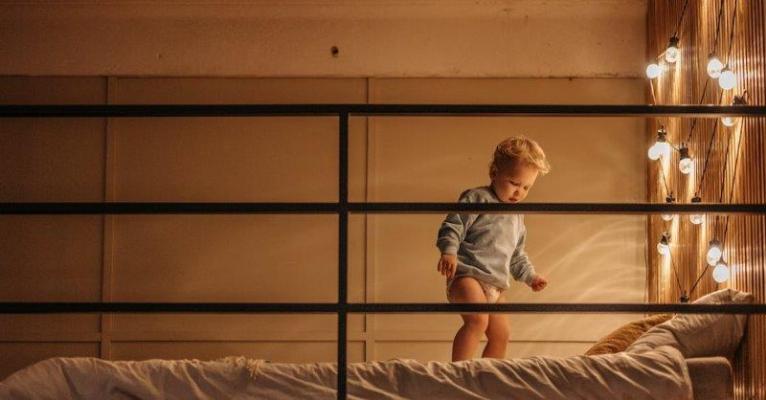
Transitioning to a bed can give toddlers newfound freedom, leading to potential boundary-pushing behaviors and difficulty following bedtime rules.
Your toddler may be inclined to test limits or disregard rules, making it challenging to ensure their safety in a bed.
Family Changes and Transitions
Major life events or changes within the family can disrupt a toddler’s routine and emotional stability, making the transition to bed more challenging.
Moving, starting daycare, or preparing for a new sibling’s arrival can create added stress for your toddler, impacting their readiness for a bed.
Sleep Issues and Disturbances
If your toddler experiences frequent sleep disturbances or struggles with bedtime routines, transitioning to a bed may exacerbate these problems.
Your child may call out for you during bedtime or wake up frequently throughout the night, indicating a need for stability before making the switch.
Behavioral Challenges Post-Transition
Transitioning to a bed may lead to behavioral issues such as aggression or acting out, signaling emotional unpreparedness for the change.
Your child may display signs of distress or resistance after being transferred to a bed, indicating a need for reassurance and support.
Dependence on Security Objects
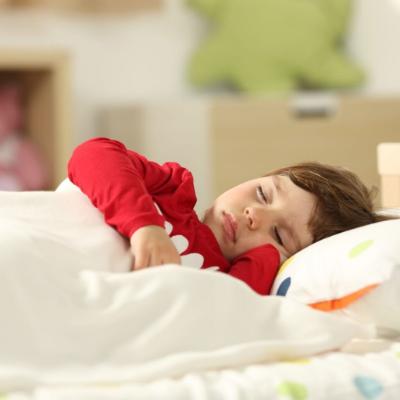
Some toddlers rely on specific items or routines for comfort during sleep, which may indicate a reluctance to transition to a bed.
Your child may cling to certain toys or blankets for security, signaling a need for familiarity and reassurance in their sleep environment.
Inability to Stay in Bed
If your toddler struggles to stay in bed or wanders around during sleep, they may not yet understand the boundaries of a bed.
Your child may repeatedly get out of bed, seeking the enclosed space of the crib for comfort and security.
Lack of Interest in Transitioning
Your toddler may not express excitement or interest in transitioning from a crib to a bed, indicating contentment with their current sleeping arrangement.
Your child may not initiate discussions about moving to a bed or show curiosity about the transition process.
Safety Concerns
Transitioning a toddler prematurely to a bed could pose safety risks, especially if they are prone to climbing or have difficulty understanding bedtime boundaries.
Your child may attempt to escape their crib frequently, indicating a lack of readiness for the transition and potential safety hazards.
Signs Toddler Is Ready For Toddler Bed
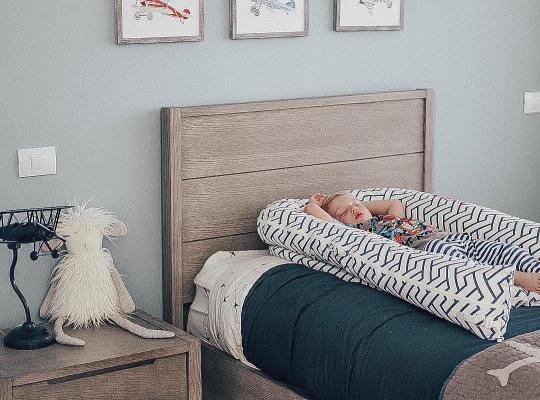
You might notice signs that your toddler is ready for a toddler bed. Toddlers make the transition between the ages of 18 months and 3 years old. Around one-third of children will be ready between 18 months and 2 years old, while another third will make the switch between 2 and 2.5 years. However, every child is unique, and readiness for this transition varies.
Here are some signs that can help you understand your toddler is ready to be transitioned to bed:
Climbing out of the Crib
If your toddler has developed the ability to climb out of their crib independently, it poses a safety risk as they could potentially fall and injure themselves. Transitioning to a toddler bed eliminates this danger and provides a safer sleeping environment.
Discomfort in the Crib
Frequent complaints from your toddler about feeling confined or uncomfortable in their crib may indicate that they’re ready for a larger sleeping space. This discomfort could be due to feeling cramped or restricted in the crib, signaling that it’s time for a transition to a toddler bed where they have more room to move.
Interest in a Big Bed
If your toddler shows curiosity or excitement about big kid beds or expresses interest in sleeping in a bed like older siblings or parents, it suggests that they may be mentally ready for the transition.
Increased Independence
A toddler who is becoming more independent in other aspects of their life, such as dressing themselves or using the potty, may be emotionally ready to be transitioned to a toddler bed. This readiness for independence extends to their sleeping environment, indicating that they may be prepared for the move from a crib to a bed.
Physical Size Outgrowing the Crib
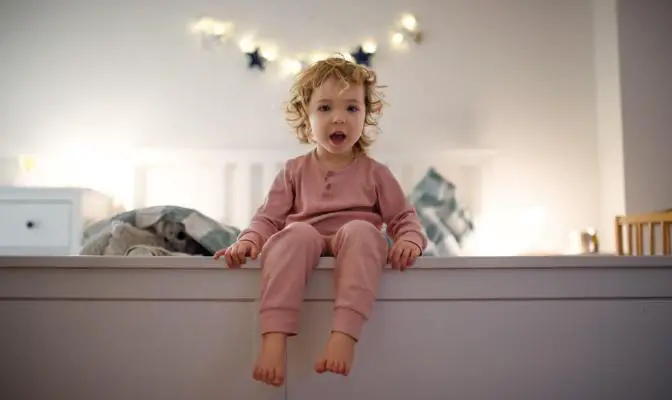
If your toddler has physically outgrown the crib, with their head or limbs frequently touching the sides or top of the crib, it’s a clear sign that they need more space to move comfortably during sleep. Transitioning to a toddler bed ensures that they have adequate space for their growing body.
Consistent Sleep Patterns
Established and consistent sleep patterns, where your toddler can sleep through the night without waking up frequently, indicate readiness for the transition to a toddler bed. This suggests that they are comfortable with their sleeping routine and may adapt well to the change in sleeping environment.
Read more to find out How To Get Toddler To Stay In Bed?
FAQs
At what age should a toddler get a bed?
A toddler should move to a bed when they are between 1.5 to 3 years old. Signs they are ready include getting too big for the crib, trying to climb out, or if they show interest in a new bed. When making the switch, involve your child, keep things safe, and stick to your bedtime routine.
How do I motivate my child to go to bed?
Create a bedtime routine with calming activities like reading or listening to soft music. Offer incentives for going to bed on time, such as earning rewards or special privileges. Set a consistent bedtime and stick to it every night to help your child’s body get used to the routine.
How To Know When Your Toddler Is Ready For A Big Kid Bed?
To know when your toddler is ready for a big kid bed, follow the American Academy of Pediatrics (AAP) recommendations. They suggest transitioning when your child is around 35 inches tall or when the crib’s side rail is less than three-quarters of their height. This helps ensure your child stays safe and comfortable as they grow.
Wrap Up
Recognizing signs that your toddler may not be ready for a bed is crucial for their safety and comfort. If your child is not showing readiness cues like outgrowing the crib or expressing interest in a bed, it might be best to hold off on the transition. Pay attention to their behavior and needs, and when the time is right, you can make the move to a bed with confidence. Remember, every child is different, so trust your instincts as a parent and prioritize what’s best for your little one.
